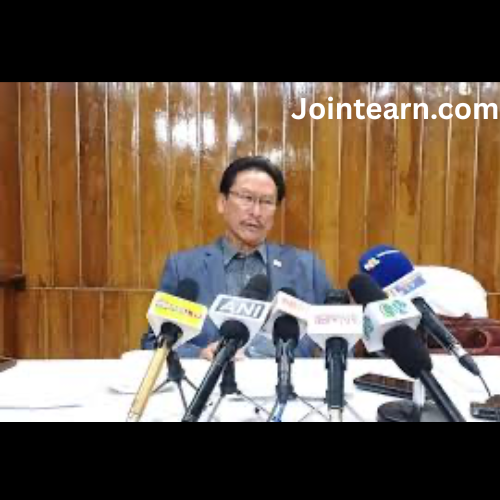Washington, D.C.: The United States Supreme Court has expressed skepticism over former President Donald Trump’s use of emergency powers to impose sweeping tariffs on imports, raising questions about the legality of the tens of billions of dollars in duties that his administration imposed earlier this year. The court’s scrutiny comes as Trump warns that overturning these tariffs could leave the United States “defenceless” and, in his words, “reduced to almost Third World status.”
The case centers on Trump’s invocation of an emergency-powers statute to justify tariffs on imports from nearly every country in the world. During recent oral arguments, three conservative justices questioned whether the law grants the president “near-limitless power” to set and modify import duties. The scrutiny is notable given the court’s 6-3 conservative majority, which historically has been sympathetic to executive authority. The debate underscores a fundamental tension between presidential discretion in matters of trade and statutory limits imposed by Congress.
While the Supreme Court’s questions signal potential legal hurdles for Trump’s tariff strategy, experts suggest that an unfavorable ruling would not necessarily end his ability to impose duties. “It’s hard to see any pathway here where tariffs end,” said Georgetown trade law professor Kathleen Claussen. “I am pretty convinced he could rebuild the tariff landscape he has now using other authorities.” Stratos Pahis of Brooklyn Law School echoed this view, noting that Trump “will have other tools that can cause pain” in international trade even if the emergency-powers argument is rejected.
Several legislative mechanisms could allow the president to maintain or reinstate tariffs. One prominent avenue is Section 301 of the Trade Act of 1974, which permits the U.S. to impose duties in response to unfair trade practices by other nations. Section 301 has historically been used against countries like China, where allegations of intellectual property theft and market restrictions justified reciprocal tariffs. “You’ve had Section 301 tariffs in place against China for years,” noted Ryan Majerus, a partner at King & Spalding and former trade official in both Trump’s first administration and the Biden administration. Section 301 enables the president to take retaliatory action while remaining within the bounds of statutory authority.
Another tool available to the president is Section 232 of the Trade Expansion Act of 1962. This provision allows tariffs to be imposed on imports deemed a threat to national security. Section 232 has been employed in previous administrations to justify duties on steel, aluminum, and other materials considered strategically important for defense purposes. In theory, Trump could invoke this statute to maintain a subset of tariffs even if the court strikes down the emergency-powers justification.
Beyond modern trade statutes, there is also potential recourse in older legislation. The Tariff Act of 1930, widely known as the Smoot-Hawley tariffs, authorized the president under Section 338 to impose tariffs of up to 50% on imports from countries that have discriminated against U.S. businesses. Though the law dates back to the Great Depression, Treasury Secretary Scott Bessent reportedly informed Reuters in September that Section 338 was under consideration as a “Plan B” should the Supreme Court invalidate the emergency-powers-based tariffs. Reviving these provisions would provide Trump with a robust, albeit unconventional, legal pathway to continue imposing substantial import duties.
The Supreme Court’s focus on Trump’s emergency powers highlights broader questions about the limits of executive authority in U.S. trade policy. Emergency powers laws were intended to grant presidents flexibility in responding to sudden economic or national security threats, but critics argue that they were never designed to justify permanent, sweeping tariffs on nearly all imports. The justices’ skepticism reflects concerns that unchecked executive power could distort trade, provoke retaliatory measures from other countries, and unsettle global markets.
Tariffs have been a central feature of Trump’s foreign policy in his second term, framed as a response to persistent U.S. trade deficits. His administration has justified imposing double-digit “reciprocal” tariffs on a wide range of countries as a necessary measure to protect American industries and workers. According to the Budget Lab at Yale University, the average U.S. tariff rose from 2.5% in January, when Trump resumed office, to 17.9% later in the year, marking the highest levels seen since 1934. This dramatic increase underscores the administration’s commitment to using tariffs as both an economic and diplomatic tool.
The stakes of the Supreme Court case extend beyond domestic politics. Should the court rule against Trump, it could signal a recalibration of U.S. trade policy and set legal limits on the scope of executive discretion in economic matters. However, experts agree that even an adverse ruling would not necessarily dismantle the broader framework of tariffs already in place. Trade authorities and legal scholars note that by strategically employing Sections 301 and 232, and potentially Section 338, the president retains substantial authority to respond to perceived inequities in international trade.
Section 301 tariffs, in particular, are flexible and can be targeted at specific goods or trading partners, allowing for precise countermeasures against practices deemed unfair. Section 232, by contrast, provides a national-security rationale, which can be broadly interpreted to cover industries critical to defense and infrastructure. Meanwhile, the Smoot-Hawley provisions in Section 338, though historically dormant, offer a significant legal basis for imposing high tariffs on discriminatory foreign imports. Collectively, these statutes ensure that the executive branch retains multiple pathways for maintaining pressure on international trading partners, even if emergency powers are curtailed.
In practical terms, Trump’s options in the event of an unfavorable Supreme Court decision could include reshaping the tariff landscape through carefully tailored actions under Sections 301 and 232. He could continue to target trade deficits, respond to perceived unfair trade practices, and address national-security concerns through selective tariffs. Legal experts believe these approaches would allow him to sustain a substantial portion of his protectionist agenda without reliance on emergency-powers legislation.
While the legal and political battles over tariffs continue, economists warn of potential consequences for global trade. High tariffs can provoke retaliatory measures from trading partners, disrupt supply chains, and raise costs for American consumers and businesses. The Supreme Court’s review therefore carries implications not only for U.S. domestic policy but also for international economic stability. How the court balances statutory interpretation with executive discretion could influence trade negotiations and the conduct of U.S. foreign policy for years to come.
In summary, the Supreme Court’s skepticism toward Trump’s emergency-powers tariffs raises significant questions about executive authority, legal limits, and trade policy in the United States. Even if the court ultimately rules against the president, multiple statutory avenues—including Sections 301, 232, and potentially Section 338—provide mechanisms for continuing aggressive trade measures. These legal tools allow the president to maintain tariffs against perceived unfair practices, address trade deficits, and safeguard industries considered vital to national security.
While the outcome of the court case remains pending, it is clear that Trump’s broader tariff strategy will likely continue to influence U.S. economic policy and international trade relations. Legal scholars and policymakers alike are closely monitoring the proceedings, recognizing that the decision could reshape the landscape of presidential authority and the scope of protectionist measures in the modern era.


Leave a Reply